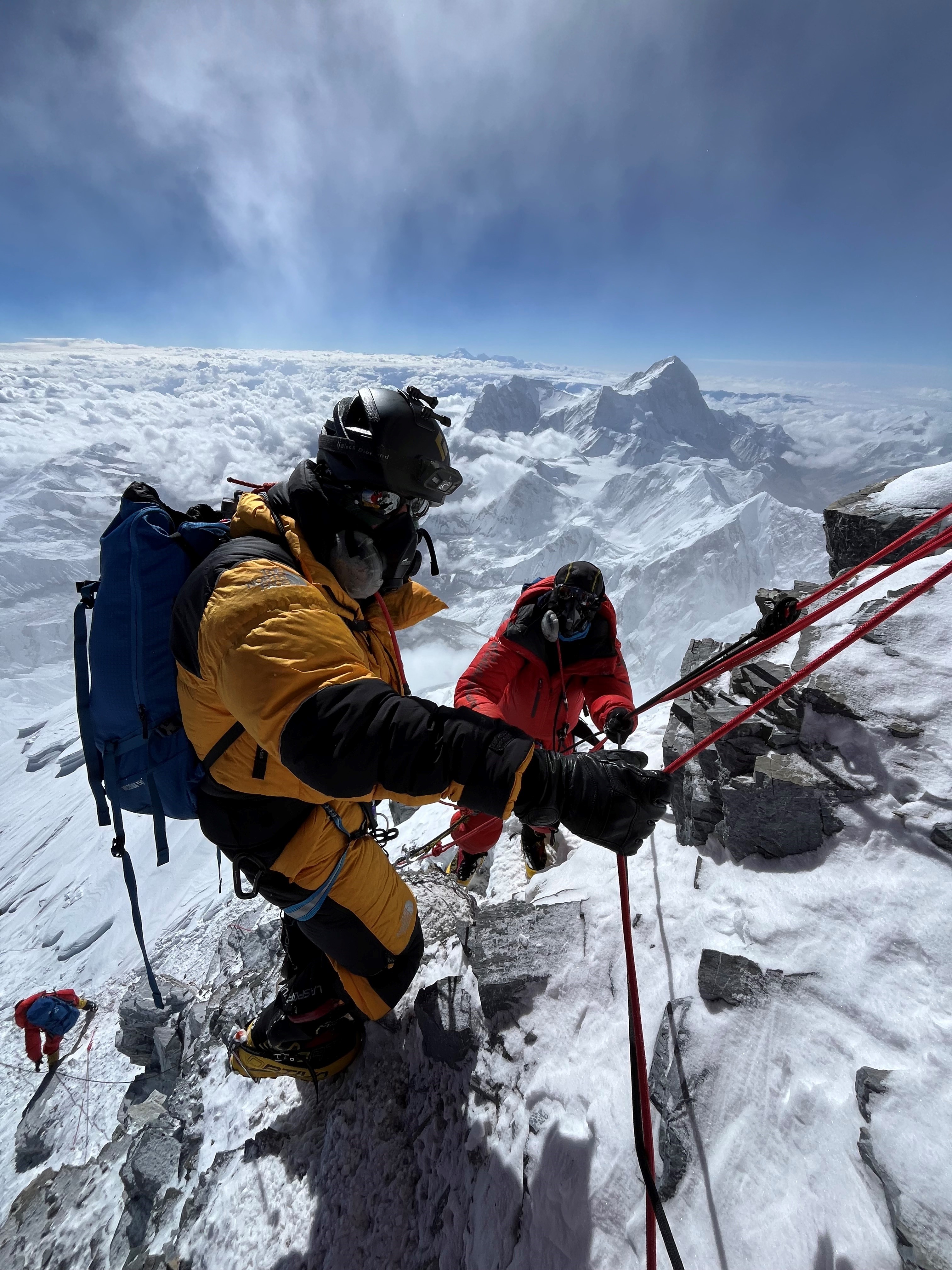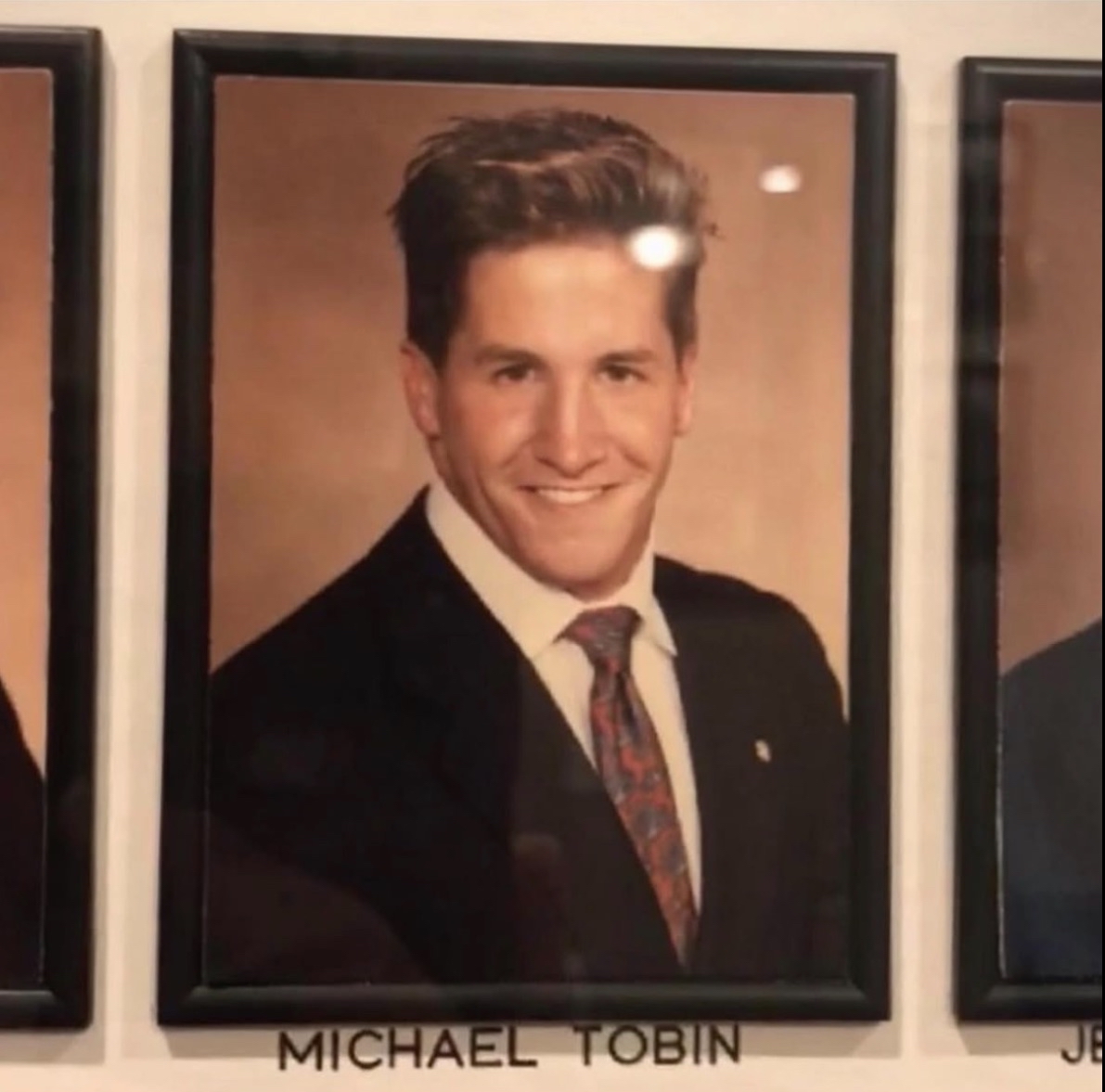High-Altitude Honor: Journalist Mike Tobin’s Everest Climb Shines a Light on Mental Health
By Christopher Brenton (North Carolina State) and Jason Guyton (Coastal Carolina)
Updates from Lexington
 Mike Tobin (Arizona State) is an alumnus of the Zeta Upsilon Chapter and a senior correspondent for The Fox News Channel, based in Chicago. He joined the network in 2001 and has since covered a wide range of major domestic and international events. In May 2025, he summited Mount Everest, doing 22 push-ups at the top to bring attention to the daily number of veteran suicides in the U.S. Brother Tobin recently sat down for an interview with the Fraternity to talk about his experience and to learn more about the message he carried to the mountaintop.
Mike Tobin (Arizona State) is an alumnus of the Zeta Upsilon Chapter and a senior correspondent for The Fox News Channel, based in Chicago. He joined the network in 2001 and has since covered a wide range of major domestic and international events. In May 2025, he summited Mount Everest, doing 22 push-ups at the top to bring attention to the daily number of veteran suicides in the U.S. Brother Tobin recently sat down for an interview with the Fraternity to talk about his experience and to learn more about the message he carried to the mountaintop.
General Fraternity (GF):
 Mike, we want to start with your Sigma Nu experience. Our Zeta Upsilon Chapter at Arizona State brought your story to our attention. The General Fraternity was not aware of your membership connection until the alumni from the chapter let us know. From what they shared, it sounds like you have a pretty rich history with Sigma Nu, including your older brother Kevin Tobin, who is also a Zeta Upsilon alum. Is that right?
Mike, we want to start with your Sigma Nu experience. Our Zeta Upsilon Chapter at Arizona State brought your story to our attention. The General Fraternity was not aware of your membership connection until the alumni from the chapter let us know. From what they shared, it sounds like you have a pretty rich history with Sigma Nu, including your older brother Kevin Tobin, who is also a Zeta Upsilon alum. Is that right?
Mike Tobin (MT):
That’s correct. I think Kevin gets a lot of credit for saving the chapter when it was in a lean membership period. He did a big recruitment push and kept the chapter on the map when we were back at the old house at 601 Alpha Dr.
GF:
Very nice. And I assume that’s what led you to join the chapter as well?
MT:
Yep, exactly.
GF:
The chapter also mentioned that you’ve stayed in close contact with several brothers. Have you remained engaged with the chapter post-graduation?
MT:
The friendships I made at Arizona State as a Sigma Nu are still some of the most meaningful relationships in my life. The Fall ’87 group, in particular, is still really tight. Even through my career in local TV and beyond, I always knew they were rooting for me. We’ve kept a strong bond. They were all at my wedding a couple of years ago, and we’re actually getting together again this July at a lake house in Wisconsin owned by one of the brothers, Mark Blanchard.
GF:
That’s awesome. One of the common promises you hear during recruitment is the idea that you’re joining a group of guys and gaining friendships that will stay with you throughout life’s most important moments, like being there for you at your wedding. It’s always great to hear about that promise becoming a reality for our brothers.
MT:
Absolutely. Friends for life.
GF:
We would like to talk to you about your recent achievement of summiting Mount Everest. What an incredible feat. What inspired you to take on this challenge?
MT:
I think everyone’s at least a little fascinated by Everest. It’s the highest point in the world. I don’t remember when I first became interested in Everest, but I climb a lot. I covered the 1996 Everest disaster and got to know Beck Weathers, who survived that climb, and his family, but that didn’t dissuade me. In fact, it got me more interested. Over the years, I’ve climbed in the Alps, most of the go-to climbs in South America, including Aconcagua, and even tackled Cho Oyu in the Himalayas, the sixth-highest mountain in the world, just before COVID. I actually had two separate Everest trips planned that were ultimately canceled due to the pandemic, so I’d kind of written it off. In fact, Chris Walker, one of the Fall ’87 guys, approached me at my wedding and said, “Are you still going to do Everest?” And I said, “No. I'm married now. I’ve got to get a house. I have more responsibilities.” But last fall, a guy from Alpenglow Expeditions called to say they had a spot. I asked my wife, and she gave me the green light. So here we are.
GF:
Speaking of your wife, you’ve talked about the support she gave you during training and the expedition. Can you share a bit more about that?
MT:
She was great. She was a supporter the whole way. For the long training days, especially out at the Indiana sand dunes, she made picnic lunches, looked after the dog when the dog was keeping me company out there. She just really went above and beyond to support me through it all.
GF:
Let’s talk about how you prepared physically and mentally for the climb.
MT:
For this climb, I added weight training to my prep, which I hadn’t done much of in the past. A lot of what you are doing on a climb is moving a backpack and equipment up a mountain, so I trained with heavy packs. I bought the same kind of sandbags that our cameramen use to hold down light stands and hiked up and down the Indiana dunes with those for hours. There’s also an Olympic-style ski jump in Fox River Grove, which is about an hour outside of Chicago. They let me hike up and down the ski jump hill with my backpack.
GF:
And what was the experience like, actually being on Everest?
MT:
Well at first it was very intimidating. As soon as you lay eyes on Everest, there’s no question you’re looking at the biggest mountain in the world. It hangs over base camp and it hangs over advanced base camp. You see it the whole time and it just sits there intimidating you. It took a while to actually get on the mountain. You spend a lot of time acclimating. You can’t just run up it or you’ll get sick and die. So, there's a lot of time getting ready, building up red blood cells. I guess about 2 1/2 weeks into it, we finally got on the mountain and reached the North Col, which is mountain climber speak for a saddle on the ridgeline. It was interesting, though, because it was a very vertical environment. A lot of vertical ice. You could go from hanging around base camp, doing hikes, and just trying to get your blood moving while breathing thin air to real vertical climbing in a big hurry. We did a night at 23,000 feet without oxygen just to prove we could hack it. Then we went back to town briefly and got decent showers and slept in a bed before coming back to camp and preparing for the summit assault. Unfortunately, we had to wait because we got a forecast that an upcoming morning was going to be the best day to climb, so we hung around and waited for that.
GF:
I remember hearing in a story covering your climb that your team experienced one of the best recent weather windows?
MT:
According to our expedition leader, who has summited 10 times, we got one of the best in 20 years. It was really calm air when we got to the summit. The only thing I would say that was a detractor from a perfect summit day was that a cloud rolled in. I wanted to get a panoramic view of the Himalayas, but unfortunately I couldn't see it.
GF:
One of the most powerful parts of your story is how you tied the climb to a cause, raising awareness around the suicide crisis among veterans and first responders and the importance of mental health. What are you hoping the takeaways are for people who are hearing about your story and the message you’re trying to bring attention to?
MT:
I’ve worked with veterans for years doing events like the Leadville 100 with Project Hero and a bike race up Pikes Peak with the Disabled Veterans National Foundation. I’ve always been some kind of athlete my entire life, and I’ve seen how participating in physical challenges can help guys fight depression and so I like to encourage others to challenge themselves. I 'm not going to pretend that I'm a counselor or an expert, but I know that a guy who's out getting after it isn't in the house getting deeper into his depression. Also, I don’t like to get into these terms like, “raising awareness.” I don't know that I can really define what raising awareness means. But my hope is that if I can let a guy know that I was as deep as you can go into the death zone with the clock ticking for me to get out of there and I took the time to do something symbolic like the 22 push-ups at the summit, that he gets the message that somebody gives a damn about him. I hope I sent a message to someone out there struggling that someone cares. Maybe that’s enough to help them make a different choice if they’re really looking at hurting themselves as a solution to their problems.
GF:
Looking back on your journalism career, can you see any connections to how your time as a member of Sigma Nu has supported your path?
MT:
Sigma Nu taught me how to take an idea from start to finish. Oftentimes the role of leader is just plunged into your lap as a college student, and you have to figure out what to do from there. You have to learn to execute. In journalism, almost every story ends up that way. You get a story in these pitch meetings, and you get it as one line and you've got to figure out how to turn it into a full story. And then do that 500 times a year.
GF:
And the Fraternity’s principles, Love, Honor, and Truth, do those still resonate with you today?
MT:
Absolutely. At this point, I’d say they’re just part of who I am. In today’s media climate, truth really matters. I’ve always tried to be someone viewers can count on. If they don’t feel like they can't count on the press in general, I hope that in the rough situations and the big stories they can trust me. I just want to get the story right and get it out there.
